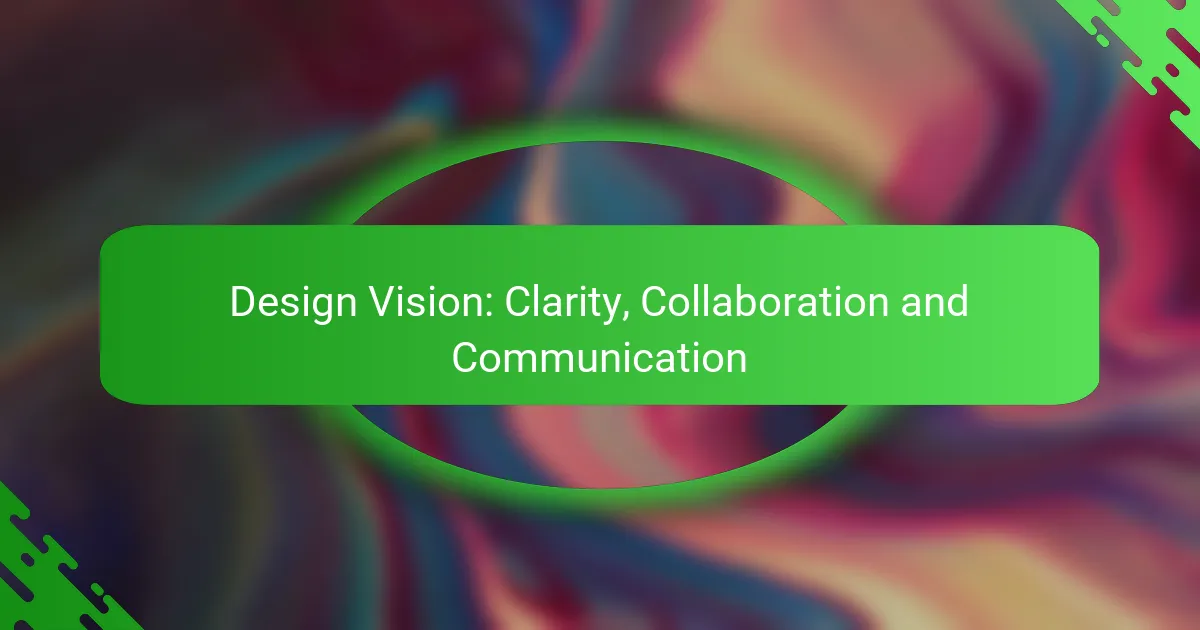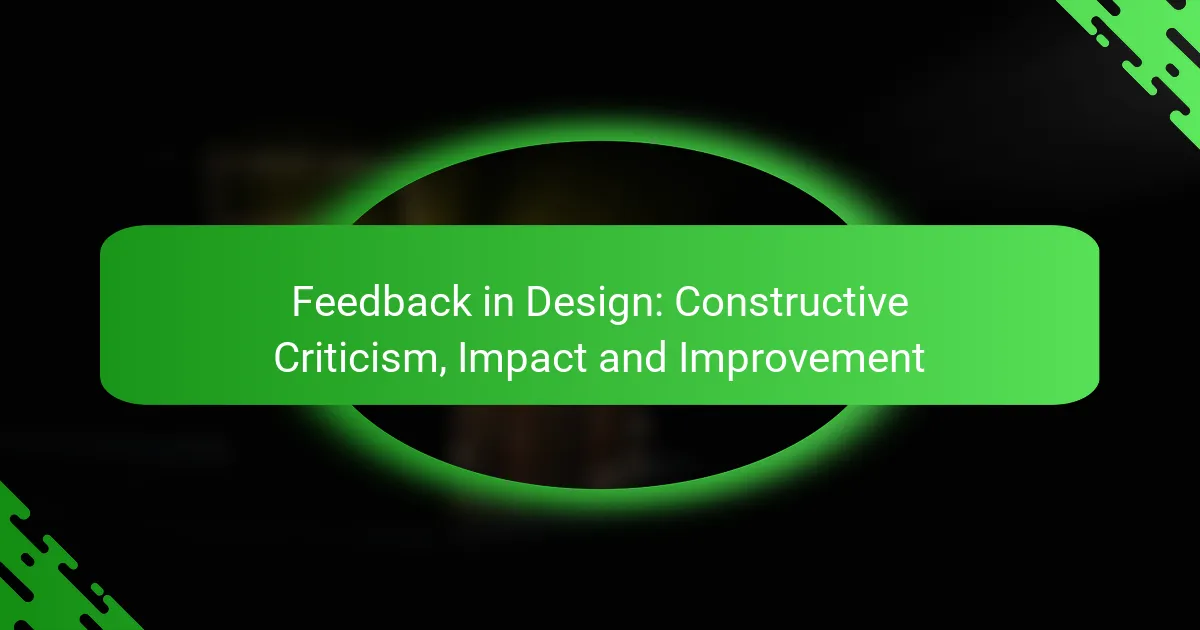In the realm of design, clarity, collaboration, and communication are essential for successful project outcomes. By establishing clear goals and utilizing effective tools, teams can ensure that everyone is aligned with the design vision. Furthermore, fostering a collaborative environment enhances teamwork and streamlines processes, allowing for meaningful contributions from all members. Implementing structured communication practices can significantly improve workflow and overall project success.
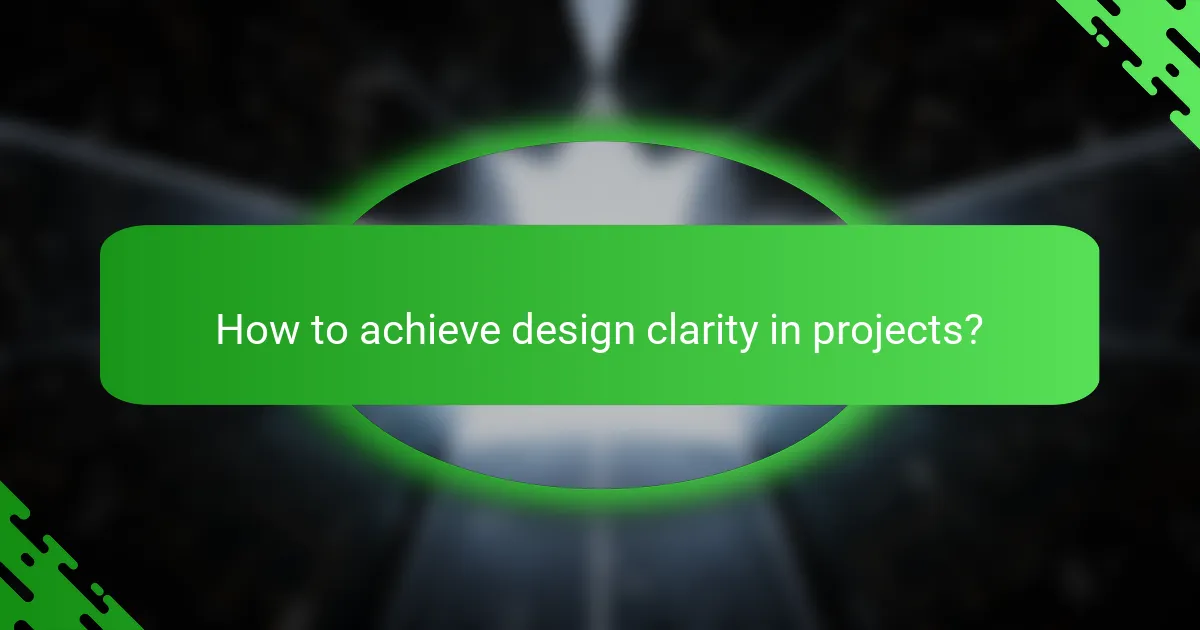
How to achieve design clarity in projects?
Achieving design clarity in projects involves clear communication, well-defined goals, and effective tools. By focusing on these elements, teams can ensure that everyone understands the design vision and objectives, leading to more successful outcomes.
Define project goals
Clearly defined project goals are essential for maintaining design clarity. Start by establishing specific, measurable, achievable, relevant, and time-bound (SMART) objectives that guide the design process. This ensures that all team members are aligned and understand the project’s purpose.
Engage stakeholders early to gather input on goals and expectations. Regularly revisit these goals to adjust as necessary, ensuring they remain relevant throughout the project lifecycle.
Utilize visual aids
Visual aids play a crucial role in enhancing design clarity. Tools such as wireframes, mockups, and prototypes help convey ideas more effectively than text alone. They allow team members and stakeholders to visualize the design and provide feedback early in the process.
Consider using collaborative platforms that enable real-time updates and sharing of visual materials. This fosters better communication and ensures everyone is on the same page regarding design elements and changes.
Implement design systems
Design systems provide a cohesive framework for maintaining clarity across projects. A well-documented design system includes guidelines on typography, color schemes, and component usage, ensuring consistency in design decisions. This reduces ambiguity and speeds up the design process.
Encourage team members to refer to the design system regularly and update it as needed. This practice helps maintain clarity and coherence, especially in larger teams or projects with multiple contributors.
Conduct regular reviews
Regular design reviews are vital for maintaining clarity throughout the project. Schedule periodic check-ins to assess progress, gather feedback, and address any misunderstandings. This collaborative approach helps identify issues early and ensures alignment with project goals.
Incorporate structured feedback sessions where team members can share insights and suggestions. This not only improves the design but also enhances team collaboration and communication, leading to a more successful project outcome.

What are effective collaboration techniques?
Effective collaboration techniques enhance teamwork by fostering communication and shared goals. These methods streamline processes, improve outcomes, and ensure that all team members contribute meaningfully.
Use collaborative tools like Figma
Collaborative tools such as Figma enable real-time design sharing and editing, allowing team members to work together seamlessly. These platforms offer features like commenting, version control, and design systems, which help maintain consistency across projects.
When using Figma, ensure that all team members are trained on the tool to maximize its potential. Regularly update design files and encourage team members to utilize the commenting feature for clarity and feedback.
Establish clear communication channels
Clear communication channels are essential for effective collaboration, as they ensure that information flows smoothly among team members. Utilize platforms like Slack or Microsoft Teams to create dedicated channels for specific projects or topics.
Set guidelines for communication, such as response times and preferred formats. Regular check-ins and updates can help keep everyone aligned and informed about project progress and changes.
Encourage feedback loops
Feedback loops are vital for continuous improvement and innovation within teams. Encourage team members to share their thoughts and suggestions regularly, fostering an environment where constructive criticism is welcomed.
Implement structured feedback sessions, such as design reviews or retrospectives, to gather insights and evaluate project outcomes. This practice not only enhances collaboration but also builds trust and accountability among team members.
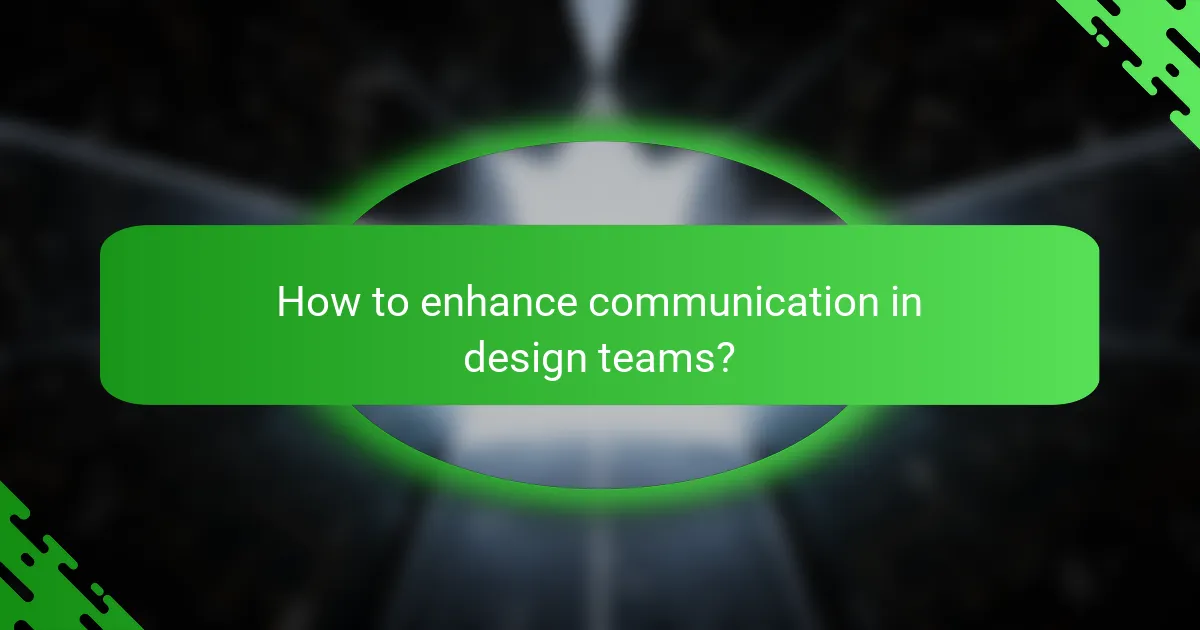
How to enhance communication in design teams?
Enhancing communication in design teams involves implementing structured practices that promote clarity and collaboration. By focusing on regular interactions, utilizing effective tools, and encouraging feedback, teams can improve their overall workflow and project outcomes.
Hold regular stand-up meetings
Stand-up meetings are brief, focused gatherings that allow team members to share updates and address any blockers. These meetings typically last 15 minutes and occur daily or weekly, depending on the team’s needs. Keeping them short encourages participation and keeps everyone aligned on project goals.
During stand-ups, each member can answer three key questions: What did I accomplish yesterday? What will I work on today? Are there any obstacles in my way? This format fosters accountability and ensures that communication remains clear and direct.
Utilize project management software
Project management software streamlines communication by providing a centralized platform for task assignments, deadlines, and progress tracking. Tools like Trello, Asana, or Jira help design teams visualize their workflow and maintain transparency on project status.
Choosing the right software depends on your team’s size and complexity of projects. Ensure that the tool you select allows for easy updates and integrates with other platforms your team uses, such as Slack or Google Drive, to enhance collaboration further.
Foster an open feedback culture
Creating an open feedback culture encourages team members to share constructive criticism and praise, which can significantly improve design processes. Regularly scheduled feedback sessions or informal check-ins can help facilitate this exchange, making it a routine part of the team’s workflow.
Encourage team members to express their thoughts openly and respectfully. Consider implementing anonymous feedback tools to ensure everyone feels comfortable sharing their opinions. This practice not only enhances communication but also strengthens team relationships and promotes continuous improvement.

What frameworks support design collaboration?
Several frameworks enhance design collaboration by promoting clear communication and teamwork among stakeholders. Agile methodology and the Design Thinking process are two prominent approaches that facilitate effective collaboration throughout the design lifecycle.
Agile methodology
Agile methodology emphasizes iterative development and flexibility, allowing teams to adapt to changes quickly. This framework supports collaboration through regular meetings, such as daily stand-ups and sprint reviews, which keep everyone aligned on project goals and progress.
To implement Agile effectively, teams should prioritize open communication and feedback. Utilizing tools like Kanban boards or Scrum frameworks can help visualize tasks and responsibilities, ensuring that all team members are aware of their roles and deadlines.
Design Thinking process
The Design Thinking process focuses on understanding user needs and fostering innovation through collaboration. It typically involves five stages: empathize, define, ideate, prototype, and test, encouraging teams to work together to generate creative solutions.
Incorporating Design Thinking requires a commitment to user-centric design and an openness to experimentation. Teams should engage in brainstorming sessions and user testing to gather diverse perspectives and refine ideas, ultimately leading to more effective design outcomes.
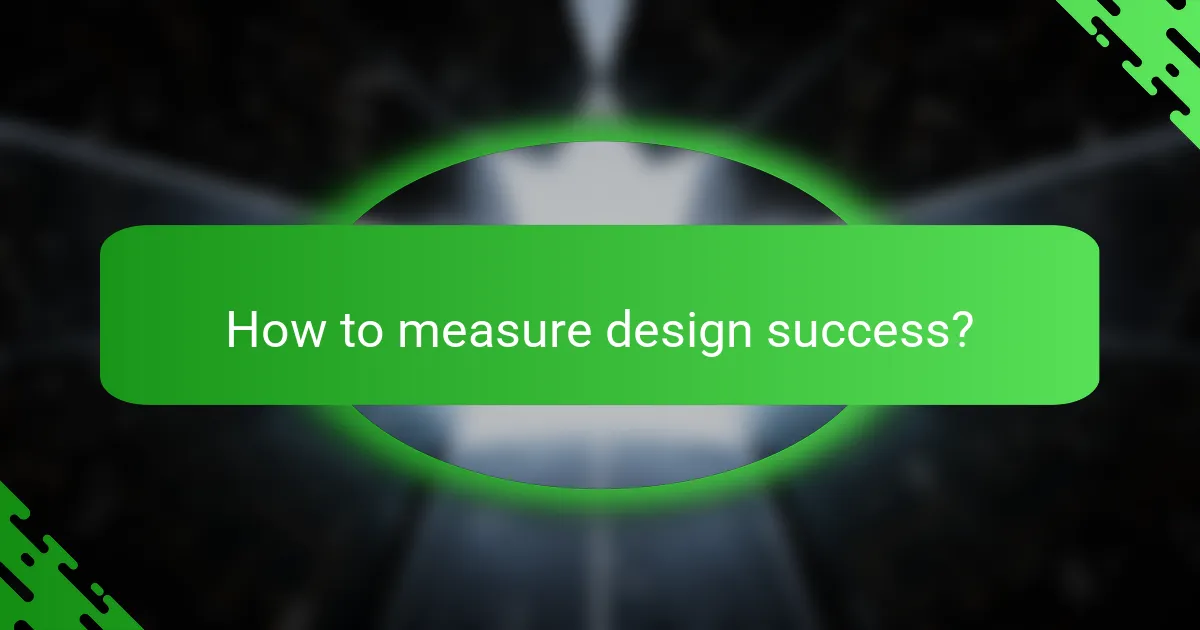
How to measure design success?
Measuring design success involves evaluating how well a design meets its intended goals, primarily through user engagement and client feedback. By focusing on these aspects, designers can gain valuable insights into the effectiveness and impact of their work.
Track user engagement metrics
User engagement metrics provide quantitative data on how users interact with a design. Key metrics include time on page, bounce rates, and conversion rates, which can indicate whether users find the design appealing and functional.
For example, a well-designed website might aim for a bounce rate below 40% and an average session duration of several minutes. Tools like Google Analytics can help track these metrics effectively.
Regularly reviewing these metrics allows designers to identify trends and make informed adjustments to enhance user experience. Avoid relying solely on qualitative feedback; a balanced approach combining both types of data is crucial for accurate assessment.
Gather client feedback
Client feedback is essential for understanding how well a design aligns with client expectations and business objectives. Conducting structured interviews or surveys can help gather specific insights about the design’s effectiveness and areas for improvement.
Using a simple rating scale (e.g., 1 to 5) can help quantify client satisfaction, while open-ended questions allow clients to express their thoughts in detail. Aim to collect feedback at various stages of the design process to ensure alignment and make necessary adjustments.
Be cautious of biases; ensure feedback is from a diverse group of clients to get a comprehensive view. Regularly incorporating client feedback into the design process fosters collaboration and leads to more successful outcomes.
